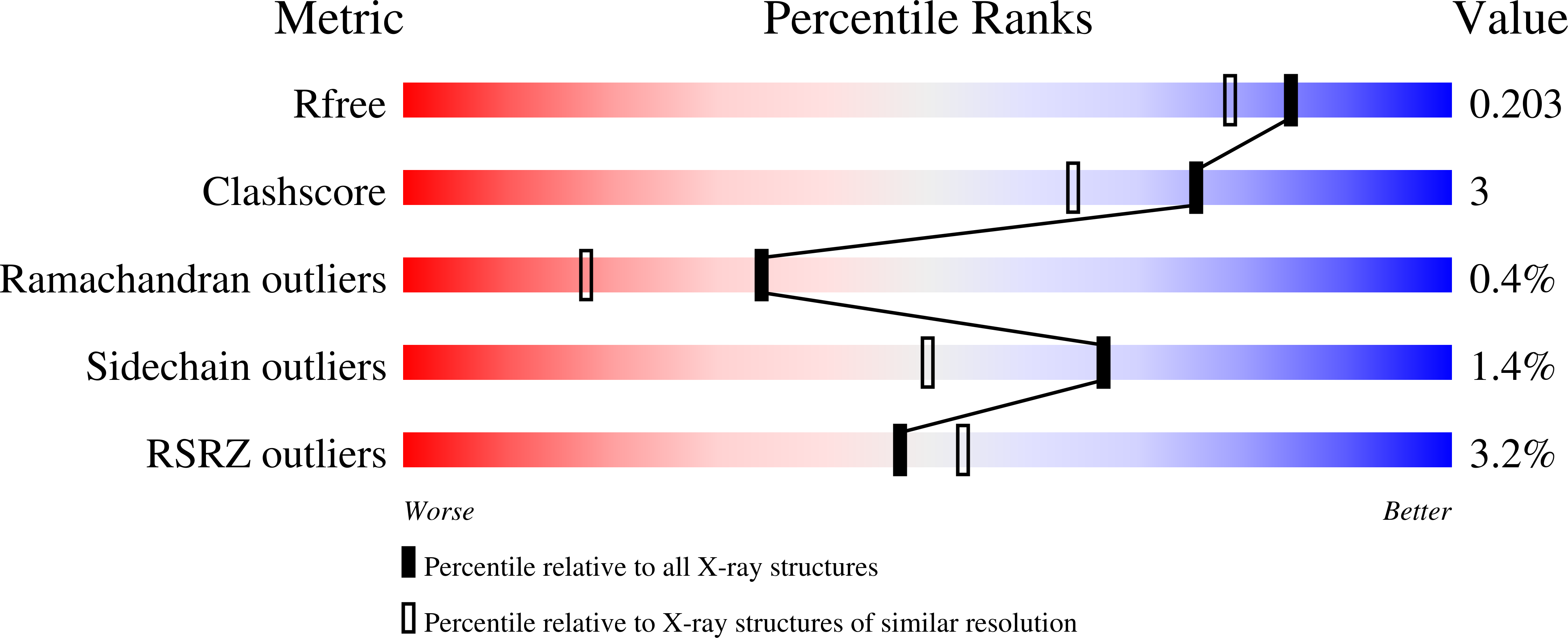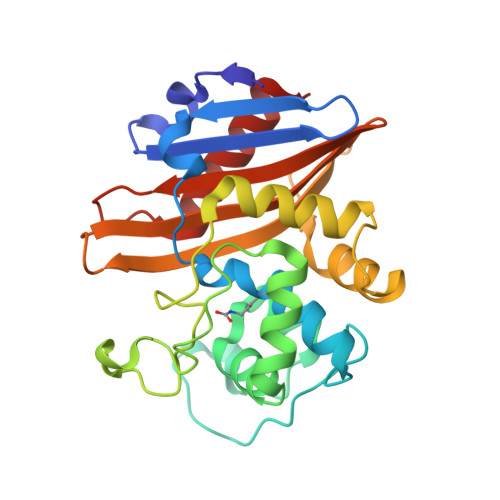In Crystallo Time-Resolved Interaction of the Clostridioides difficile CDD-1 enzyme with Avibactam Provides New Insights into the Catalytic Mechanism of Class D beta-lactamases.
Stewart, N.K., Toth, M., Stasyuk, A., Vakulenko, S.B., Smith, C.A.(2021) ACS Infect Dis 7: 1765-1776
- PubMed: 33908775
- DOI: https://doi.org/10.1021/acsinfecdis.1c00094
- Primary Citation of Related Structures:
7LNO, 7LNQ, 7LNR, 7ME9, 7MEA, 7MEB, 7MEC, 7MED, 7MEE, 7MEF, 7MEG, 7MEH - PubMed Abstract:
Class D β-lactamases have risen to notoriety due to their wide spread in bacterial pathogens, propensity to inactivate clinically important β-lactam antibiotics, and ability to withstand inhibition by the majority of classical β-lactamase inhibitors. Understanding the catalytic mechanism of these enzymes is thus vitally important for the development of novel antibiotics and inhibitors active against infections caused by antibiotic-resistant bacteria. Here we report an in crystallo time-resolved study of the interaction of the class D β-lactamase CDD-1 from Clostridioides difficile with the diazobicyclooctane inhibitor, avibactam. We show that the catalytic carboxylated lysine, a residue that is essential for both acylation and deacylation of β-lactams, is sequestered within an internal sealed pocket of the enzyme. Time-resolved snapshots generated in this study allowed us to observe decarboxylation of the lysine and movement of CO 2 and water molecules through a transient channel formed between the lysine pocket and the substrate binding site facilitated by rotation of the side chain of a conserved leucine residue. These studies provide novel insights on avibactam binding to CDD-1 and into the catalytic mechanism of class D β-lactamases in general.
Organizational Affiliation:
Department of Chemistry and Biochemistry, University of Notre Dame, Notre Dame, Indiana 46556, United States.


















